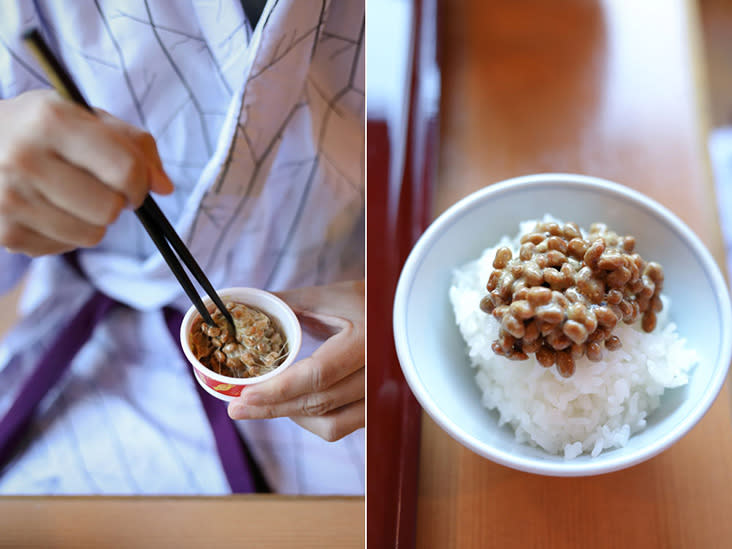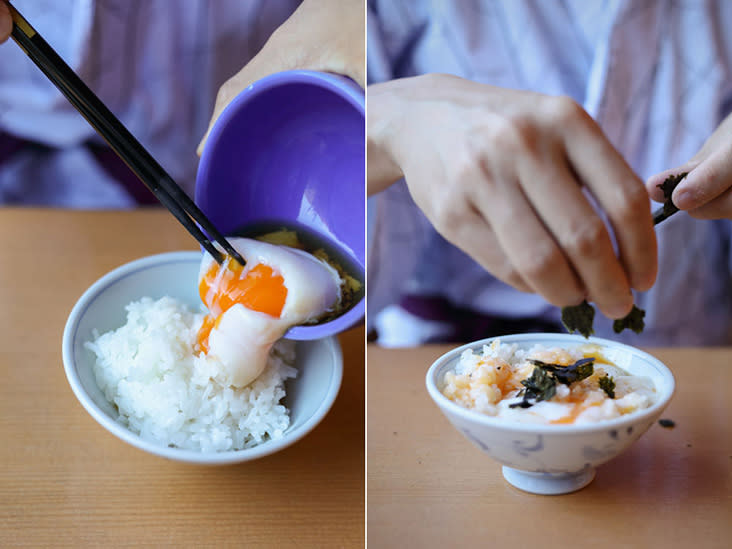Here's a very Japanese breakfast you can make yourself: 'Onsen' egg and 'natto' on rice!


KUALA LUMPUR, Aug 18 — When we travel, souvenirs and memories are usually what we bring back with us.
The former as gifts for families and friends, fridge magnets to populate the freezer door like a map of someone else’s adventures. The latter are for life, and perhaps the best treasures one could find when exploring lands distant and near.
What we carry home far less often are new traditions and practices adopted from the countries who play host to us but for a week or two.
Some may seek fluency in a foreign tongue, having fallen in love with the language (or with those who are native speakers). Others attempt to replicate memorable meals they’ve had, to varying degrees of success.
I belong to the second camp. While it’s true some dishes may prove a challenge (croissants with exactly 27 layers, no more and no less, come to mind), not every delicacy has to cause a kitchen nightmare.
During visits to Japan, especially when I’ve had the opportunity to stay in ryokan guesthouses, one of my favourite parts of the experience is the traditional Japanese breakfast.

Instead of cereal or toast, guests are offered bowls of hot steamed rice. Served on the side are the typical toppings of a runny onsen tamago and a tiny container of natto.
Onsen tamago is Japanese for “hot spring egg” and take the form of a soft-boiled egg. The egg white is almost milky while the creamy yolk still holds its shape and vibrant orange colour. This poached egg is usually served in a small bowl filled with dashi broth and soy sauce.
Natto, on the other hand, isn’t made fresh at all as it’s fermented soybeans and most Japanese families just buy the ready-made containers from the supermarket. I adore its rich umami flavour and delicate funk; others may not see it in the same light.
Its slimy texture — especially the abundance of sticky “strings” once you try to lift some up with your chopsticks — might conjure visions of a less terrestrial substance than an ingredient served in the comforts of tatami-floored rooms.
An acquired taste, then. But nothing ventured, nothing gained.
Perhaps you’ll find yourself a convert to its modest charms as I have been. If so, rejoice in the fact this is one breakfast dish that is easy enough to prepare at home once you’ve said sayonara to Japan.
Certainly there isn’t any kneading or folding required. No 27 layers of pastry. Simply add the onsen tamago or the natto — or, if you’re greedy like me, both – to the rice, mix and enjoy.
The greatest pleasures in life are the simplest.
ONSEN EGG & NATTO ON RICE
Which goes first, the onsen tamago or the natto? Personally I prefer to add the natto first as I can mix the soybeans thoroughly with the rice before adding the soft-boiled egg.
A more minimalist approach would be to enjoy the rice with the egg and natto separately, as you can always fill your bowl with more rice.
In such a case, have your rice with the onsen tamago first as the creamy, egg-y residue will coat your bowl. It’s an added layer of flavour when you dish up a second bowl of rice for the natto round.
I’ve simplified the sauce to what’s readily available — light soy sauce and hot water — but a traditional onsen tamago sauce would entail boiling dashi stock, mirin (rice wine) and shoyu (soy sauce) together before cooling it down.

Make sure to stir the natto well in its container before adding it to the rice; some Japanese believe this is the right method as it makes the natto more delicious! Mix the natto a second time, this time with the rice.
Experiment and decide for yourself which is the best way to enjoy your onsen egg and natto on rice.
Ingredients
Cooked white rice (half a bowl to serve but refill from the rice pot as desired)
1 litre water
1 organic egg, room temperature
2 tablespoons light soy sauce, diluted with a little hot water (or dashi stock, if available)
1 container of natto, room temperature
Nori seaweed (optional)

Method
For the rice, it’s perfectly fine to microwave some cooked white rice. Otherwise, cook rice in a rice cooker as you normally would and keep the rice on warm mode till it’s time to serve.
To make the onsen tamago, first bring a pot of water to boil. After the water has boiled, set the pot aside for 5 minutes. Now place the egg into the pot of water. Allow to sit for 20 minutes before removing from the water.

In the meantime, prepare the sauce by diluting the light soy sauce in hot water or dashi stock, if you happen to have it. Pour into a small bowl. Once the egg is ready, crack it directly into this sauce bowl.
Ladle up half a bowl of hot rice. Serve the rice with the onsen tamago, container of natto and crumbled nori seaweed for garnishing, if desired, and serve immediately.
For more Weekend Kitchen stories and recipes, visit http://devilstales.com
Related Articles The most decadent chocolate fudge brownies in the world A very Yuletide dinner with Duck à l’Orange Three Little Birds and the future of specialty coffee



